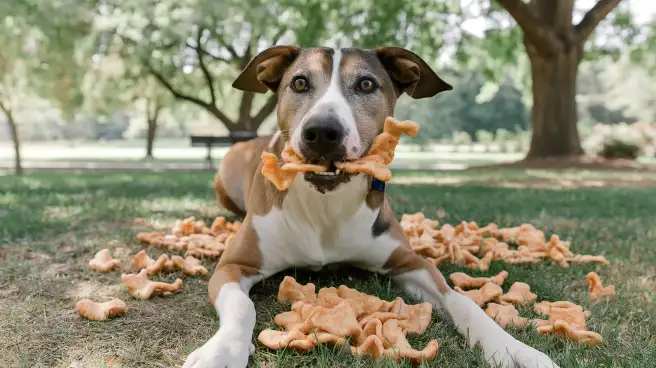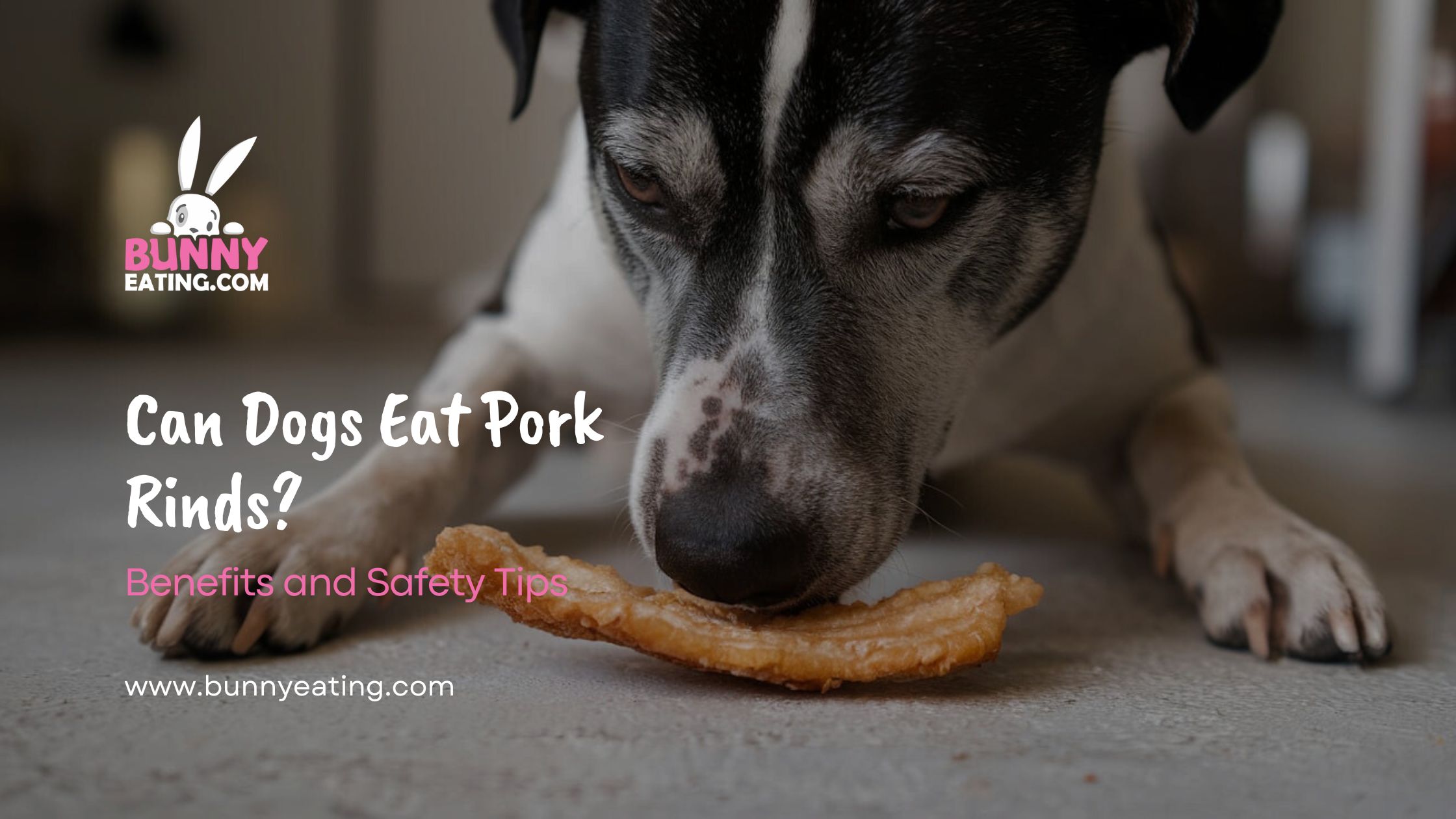Dogs eat pork when their owners feed them various forms of pork, like cooked meat, bones, or snacks. Some pork products can be safe if prepared correctly, but others can pose risks. It’s important to know what types of pork are safe for dogs to eat.
But what about pork rinds? These crispy snacks might seem harmless, but are they safe for your dog? Before you toss one to your furry friend, there are some things you need to know. It’s not as simple as it seems. Can Dogs Eat Pork Rinds?
Pork rinds are popular snacks made from fried pig skin. They are high in fat and often loaded with salt and seasoning. While they might be tasty for humans, pork rinds can be dangerous for dogs. They could lead to health problems if eaten.
Understanding Your Dog’s Nutritional Needs
When it comes to keeping your canine companion healthy and happy, balanced nutrition is key. Dogs aren’t just meat-eaters; they’re opportunistic omnivores, which means they can digest a variety of foods. But that doesn’t mean they should eat everything we do!
A well-rounded dog diet includes proteins, fats, and carbohydrates, along with essential vitamins and minerals. Proteins help build and repair tissues, while fats provide energy and support cell function. Carbs, though not essential, can be a quick energy source. Vitamins and minerals play crucial roles in everything from bone health to immune function. When considering treats for dogs, it’s important to remember that they should make up no more than 10% of your dog’s daily calorie intake.
What Are Pork Rinds?
Pork rinds might seem like a simple snack, but there’s more to them than meets the eye. These crispy treats are made from pork skin that’s been dried, fried, and seasoned. Let’s break down the pork rind ingredients to understand what your dog might be getting if they snag one.
The main ingredient in pork rinds is, unsurprisingly, pork skin. This is usually fried in its fat, creating a puffy, crunchy texture. Salt is a key player in the flavour profile, often added in generous amounts. Many varieties also include additional seasonings, which can range from simple spices to more complex flavour blends. The pork rind composition typically shows high levels of protein and fat, with virtually no carbohydrates. While this might sound good on paper, the high fat and salt content can be problematic for our canine friends.
The Health Risks of Pork Rinds for Dogs

When it comes to health risks for dogs, pork rinds raise several red flags. One major concern is the potential link between high-fat snacks like pork rinds and pancreatitis in dogs. The pancreas plays a crucial role in digestion, and a high-fat diet can overwhelm this organ, leading to inflammation and severe pain.
Another significant risk is salt poisoning. Pork rinds are typically loaded with sodium, and dogs are much more sensitive to salt than humans. Salt poisoning in dogs can lead to symptoms like excessive thirst, urination, vomiting, and in severe cases, seizures or even death. Moreover, the high-calorie content of pork rinds can contribute to obesity in dogs if given regularly. Just like in humans, carrying extra weight can lead to a host of health problems for our furry friends, including joint issues and diabetes.
What to Do When a Dog Consumes Pork Rinds?
Accidents happen, and your dog might snag a pork rind when you’re not looking. Don’t panic! In most cases, a single pork rind won’t cause immediate harm. However, it’s essential to practice dog feeding in moderation and keep a close eye on your pet for any unusual symptoms.
If your dog has eaten a large number of pork rinds or shows signs of distress like vomiting, diarrhoea, or lethargy, it’s best to consult your veterinarian. They can provide guidance based on your dog’s size, health history, and the amount consumed. Remember, when it comes to your pet’s health, it’s always better to err on the side of caution.
Can Dogs Eat Pork?
While pork rinds are generally a no-go for dogs, you might be wondering about other pork products. Can dogs enjoy a bit of bacon or a taste of ham? The answer isn’t a simple yes or no. Plain, cooked pork for dogs can be safe in moderation, but there are important considerations to keep in mind.
Lean pork can be a good source of protein for dogs, but it should always be thoroughly cooked and free from seasonings. Pork chops for dogs, when prepared properly, can be an occasional treat. However, fatty cuts of pork should be avoided due to the risk of pancreatitis. As for pork bones for dogs, it’s best to steer clear. Cooked bones can splinter and cause serious internal injuries.
Can Dogs Eat Pork Rinds? A Comprehensive Guide

After diving deep into the world of canine nutrition and pork products, we can confidently say that pork rinds are not a recommended treat for dogs. The high fat and salt content, combined with the risk of seasoning toxicity, make them a poor choice for our furry friends. While a small piece might not cause immediate harm, there are far better options available.
Instead of pork rinds, consider healthier dog treat options that can satisfy your pup’s craving for something crunchy. Carrot sticks, apple slices (without seeds), or specially formulated dog treats are all great alternatives. Remember, the best treat you can give your dog is your love and attention, combined with a balanced nutrition plan tailored to their specific needs.
Conclusion
In conclusion, dogs should not eat pork rinds. These snacks contain high amounts of fat, salt, and seasonings that can harm a dog’s health. Eating pork rinds can lead to serious problems like pancreatitis, obesity, or salt poisoning. It’s better to give your dog healthy treats that are made just for them.
As a responsible dog owner, you need to think about your dog’s health first. Keeping pork rinds away from your dog is a smart choice. Instead, focus on feeding your dog balanced meals and safe treats that support their well-being. By avoiding pork rinds, you can help your dog stay healthy and happy for years to come.
FAQs
What happens if my dog eats pork rinds?
If your dog eats pork rinds, they might experience digestive issues like vomiting or diarrhoea. The high fat and salt content can also lead to more serious health problems like pancreatitis. It’s best to avoid feeding them pork rinds.
Is pork skin digestible for dogs?
Pork skin is not easily digestible for dogs, especially when fried or seasoned. It can cause stomach upset and other digestive issues. Raw or cooked, plain pork skin might be slightly better but is still not recommended.
What are the side effects of eating pork rinds?
Side effects of eating pork rinds include vomiting, diarrhoea, obesity, and pancreatitis. The high salt content can also cause salt poisoning in severe cases. These risks make pork rinds unsafe for dogs.
How to cook pork rinds for dogs?
It’s not recommended to cook pork rinds for dogs because of the high-fat content and potential for health issues. Instead, opt for lean, unseasoned pork cooked plainly, which is safer and healthier for your dog.











